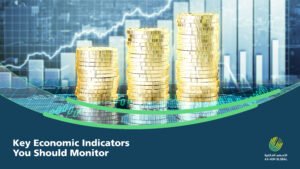Interest rate policies are among the most prominent tools used by central banks to achieve economic stability and stimulate growth. In the Arab region, these policies involve raising or lowering interest rates to steer the economy toward desired goals. Therefore, it is essential to study the impact of these policies on economic growth, especially in light of the multiple economic challenges faced by Arab countries.
1. Definition of Interest Rate Policies
Interest rate policy is defined as the actions taken by a central bank to set the interest rate, which affects the cost of borrowing and the return on investment. When a central bank raises interest rates, borrowing becomes more expensive, leading to a reduction in both investment and consumer spending. Conversely, lowering interest rates can stimulate economic activity by encouraging individuals and businesses to borrow and spend more.
2. The Impact of Interest Rate Policies on Economic Growth
A. Direct Impact on Investments
Investments are one of the key drivers of economic growth. When central banks raise interest rates, companies might become concerned about borrowing costs, making them hesitant to undertake new investments. Similarly, individuals may reduce their consumer spending due to rising borrowing costs, such as car loans or mortgages. Thus, rising interest rates lead to a slowdown in economic growth due to reduced investment.
B. Impact on the Labor Market
The labor market plays a vital role in the economic growth process. Increasing interest rates may lead to a slowdown in company expansion, resulting in fewer job opportunities. This dynamic is often more evident in economies that heavily depend on interest-sensitive sectors, such as construction.
C. Impact on Inflation
Historically, interest rate policies have been used as a tool to combat inflation. However, in the Arab region, these policies may indirectly impact economic growth. For example, if Arab countries experience high inflation, raising interest rates may reduce the money supply but have negative effects on growth, as higher rates may hinder economic recovery.
3. Economic Conditions in Arab Countries
The economic conditions in Arab countries vary significantly, with some countries facing significant challenges such as political conflicts, corruption, and unstable financial markets. These challenges are factors that directly affect the effectiveness of interest rate policies. For instance, in countries experiencing internal conflicts or political instability, investments may remain weak regardless of the interest rate. Therefore, the impact of interest rate policies may be limited in some contexts.
4. Experiences of Arab Countries
The effect of interest rate policies can be clearly seen through the experiences of some Arab countries. For example, in Egypt, the Central Bank raised interest rates several times to combat inflation, which negatively impacted growth rates. In contrast, countries such as the United Arab Emirates have adopted flexible interest rate policies, which helped them maintain high investment levels and support growth through economic diversification.
5. Parallel Policies
To mitigate the negative effects of high interest rate policies, Arab countries may adopt other fiscal policies, such as increasing public spending or strengthening small and medium-sized enterprises. Additionally, they can improve the business environment by reducing bureaucratic obstacles and simplifying procedures for investors.
Conclusion
The previous analysis shows that interest rate policies have a dual impact on economic growth in the Arab region. While rising interest rates can slow down growth, economic conditions and local contexts play a crucial role in shaping this impact. It is important for Arab countries to continue to develop their financial and monetary policies in a balanced manner, taking into account the local and global economic environment. Through this approach, sustainable stability and growth, which all Arab countries strive for, can be achieved.


